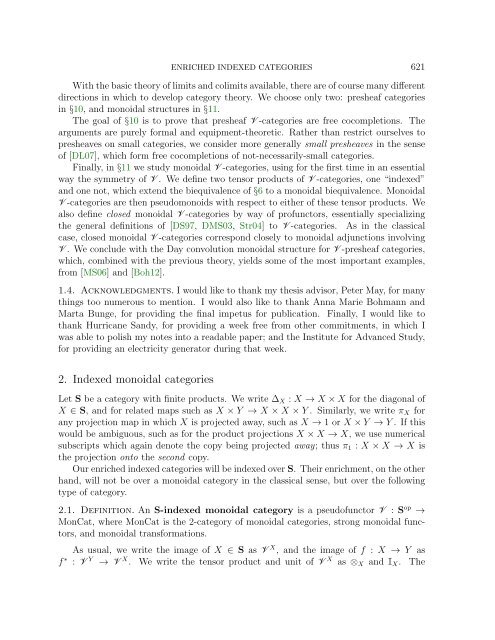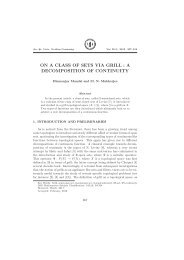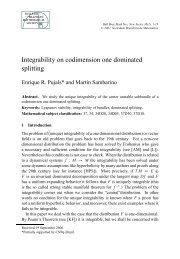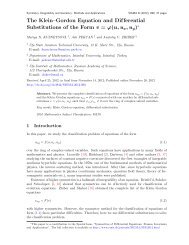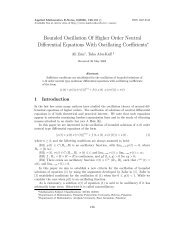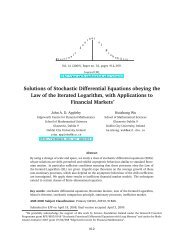ENRICHED INDEXED CATEGORIES Contents 1. Introduction
ENRICHED INDEXED CATEGORIES Contents 1. Introduction
ENRICHED INDEXED CATEGORIES Contents 1. Introduction
Create successful ePaper yourself
Turn your PDF publications into a flip-book with our unique Google optimized e-Paper software.
<strong>ENRICHED</strong> <strong>INDEXED</strong> <strong>CATEGORIES</strong> 621With the basic theory of limits and colimits available, there are of course many differentdirections in which to develop category theory. We choose only two: presheaf categoriesin §10, and monoidal structures in §1<strong>1.</strong>The goal of §10 is to prove that presheaf V -categories are free cocompletions. Thearguments are purely formal and equipment-theoretic. Rather than restrict ourselves topresheaves on small categories, we consider more generally small presheaves in the senseof [DL07], which form free cocompletions of not-necessarily-small categories.Finally, in §11 we study monoidal V -categories, using for the first time in an essentialway the symmetry of V . We define two tensor products of V -categories, one “indexed”and one not, which extend the biequivalence of §6 to a monoidal biequivalence. MonoidalV -categories are then pseudomonoids with respect to either of these tensor products. Wealso define closed monoidal V -categories by way of profunctors, essentially specializingthe general definitions of [DS97, DMS03, Str04] to V -categories. As in the classicalcase, closed monoidal V -categories correspond closely to monoidal adjunctions involvingV . We conclude with the Day convolution monoidal structure for V -presheaf categories,which, combined with the previous theory, yields some of the most important examples,from [MS06] and [Boh12].<strong>1.</strong>4. Acknowledgments. I would like to thank my thesis advisor, Peter May, for manythings too numerous to mention. I would also like to thank Anna Marie Bohmann andMarta Bunge, for providing the final impetus for publication. Finally, I would like tothank Hurricane Sandy, for providing a week free from other commitments, in which Iwas able to polish my notes into a readable paper; and the Institute for Advanced Study,for providing an electricity generator during that week.2. Indexed monoidal categoriesLet S be a category with finite products. We write ∆ X : X → X × X for the diagonal ofX ∈ S, and for related maps such as X × Y → X × X × Y . Similarly, we write π X forany projection map in which X is projected away, such as X → 1 or X × Y → Y . If thiswould be ambiguous, such as for the product projections X × X → X, we use numericalsubscripts which again denote the copy being projected away; thus π 1 : X × X → X isthe projection onto the second copy.Our enriched indexed categories will be indexed over S. Their enrichment, on the otherhand, will not be over a monoidal category in the classical sense, but over the followingtype of category.2.<strong>1.</strong> Definition. An S-indexed monoidal category is a pseudofunctor V : S op →MonCat, where MonCat is the 2-category of monoidal categories, strong monoidal functors,and monoidal transformations.As usual, we write the image of X ∈ S as V X , and the image of f : X → Y asf ∗ : V Y → V X . We write the tensor product and unit of V X as ⊗ X and I X . The


